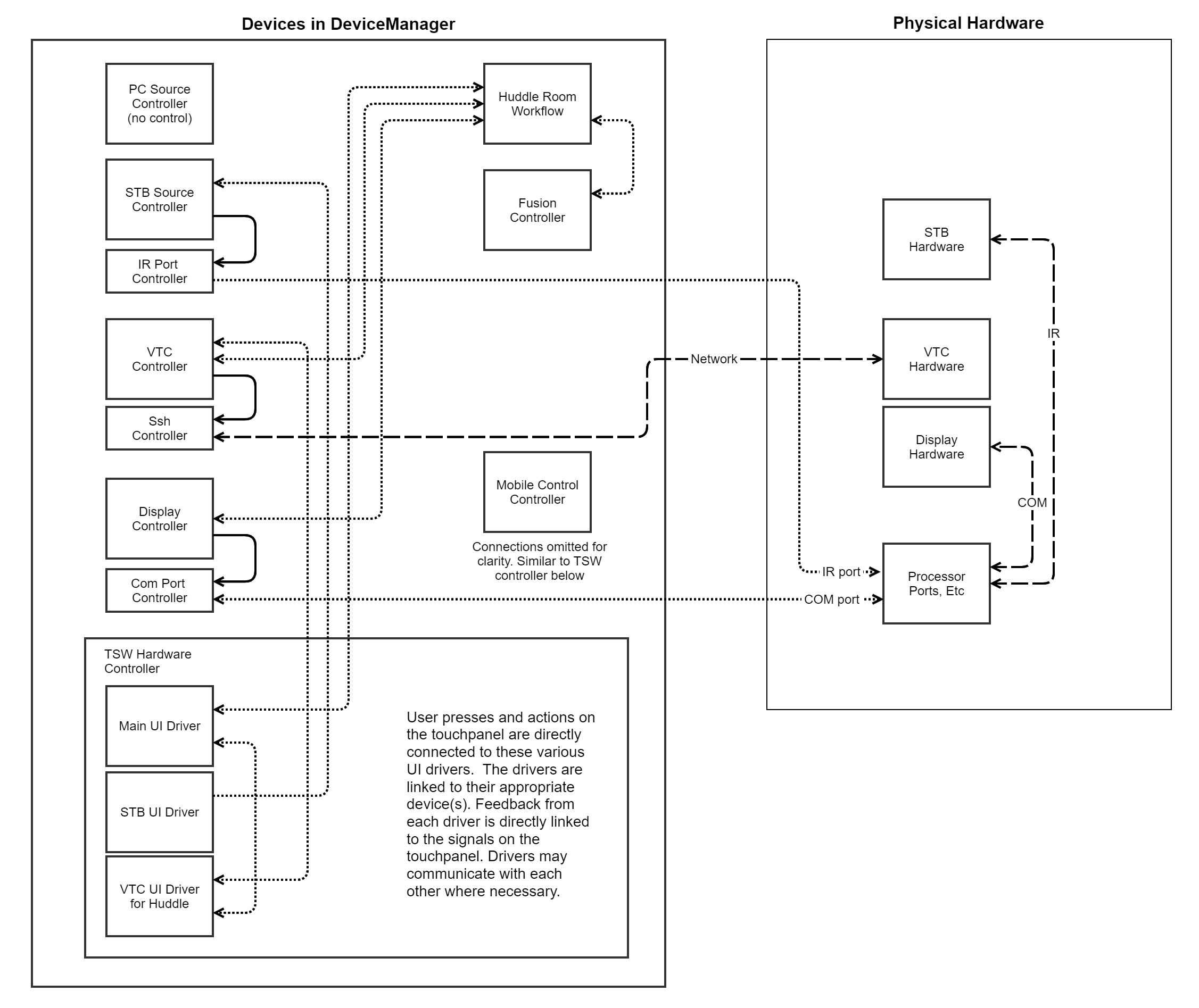-
Notifications
You must be signed in to change notification settings - Fork 77
Arch 1
YouTube Video - The Device Model in PepperDash Essentials
A Device (PepperDash.Core.Device) is a logical construct. It may represent a piece of hardware, a port, a socket, a collection of other devices/ports/constructs that define an operation, or any unit of logic that should be created at startup and exist independent of other devices.
DeviceManager (PepperDash.Essentials.Core.DeviceManager) is the collection of all Devices. The collection of everything we control, and other business logic in a system. See the list below for what is typical in the device manager.
In Essentials, most everything we do is focused in one layer: The Devices layer. This layer interacts with the physical Crestron and other hardware and logical constructs underneath, and is designed so that we rarely act directly on the often-inconsistent hardware layer. The DeviceManager is responsible for containing all of the devices in this layer.
Types of things in DeviceManager:
- Rooms
- Sources
- Codecs, DSPs, displays, routing hardware
- IR Ports, Com ports, SSh Clients, ...
- Occupancy sensors and relay-driven devices
- Logical devices that manage multiple devices and other business, like shade or lighting scene controllers
- Fusion connectors to rooms
A Device doesn't always represent a physical piece of hardware, but rather a logical construct that "does something" and is used by one or more other devices in the running program. For example, we create a room device, and its corresponding Fusion device, and that room has a Cisco codec device, with an attached SSh client device. All of these lie in a flat collection in the DeviceManager.
The
DeviceManageris nothing more than a modified collection of things, and technically those things don't have to be Devices, but must at least implement theIKeyed(PepperDash.Core.IKeyed) interface (simply so items can be looked up by their key.) Items in theDeviceManagerthat are Devices are run through additional steps of activation at startup. This collection of devices is all interrelated by their string keys.
In this flat design, we spin up devices, and then introduce them to their "coworkers and bosses" - the other devices and logical units that they will interact with - and get them all operating together to form a running unit. For example: A room configuration will contain a "VideoCodecKey" property and a "DefaultDisplayKey" property. The DeviceManager provides the room with the codec or displays having the appropriate keys. What the room does with those is dependent on its coding.
In the default Essentials routing scheme, the routing system gets the various devices involved in given route from
DeviceManager, as they are discovered along the defined tie-lines. This is all done at route-time, on the fly, using only device and port keys. As soon as the routing operation is done, the whole process is released from memory. This is extremely-loose coupling between objects.
This flat structure ensures that every device in a system exists in one place and may be shared and reused with relative ease. There is no hierarchy.
Next: Configurable lifecycle
